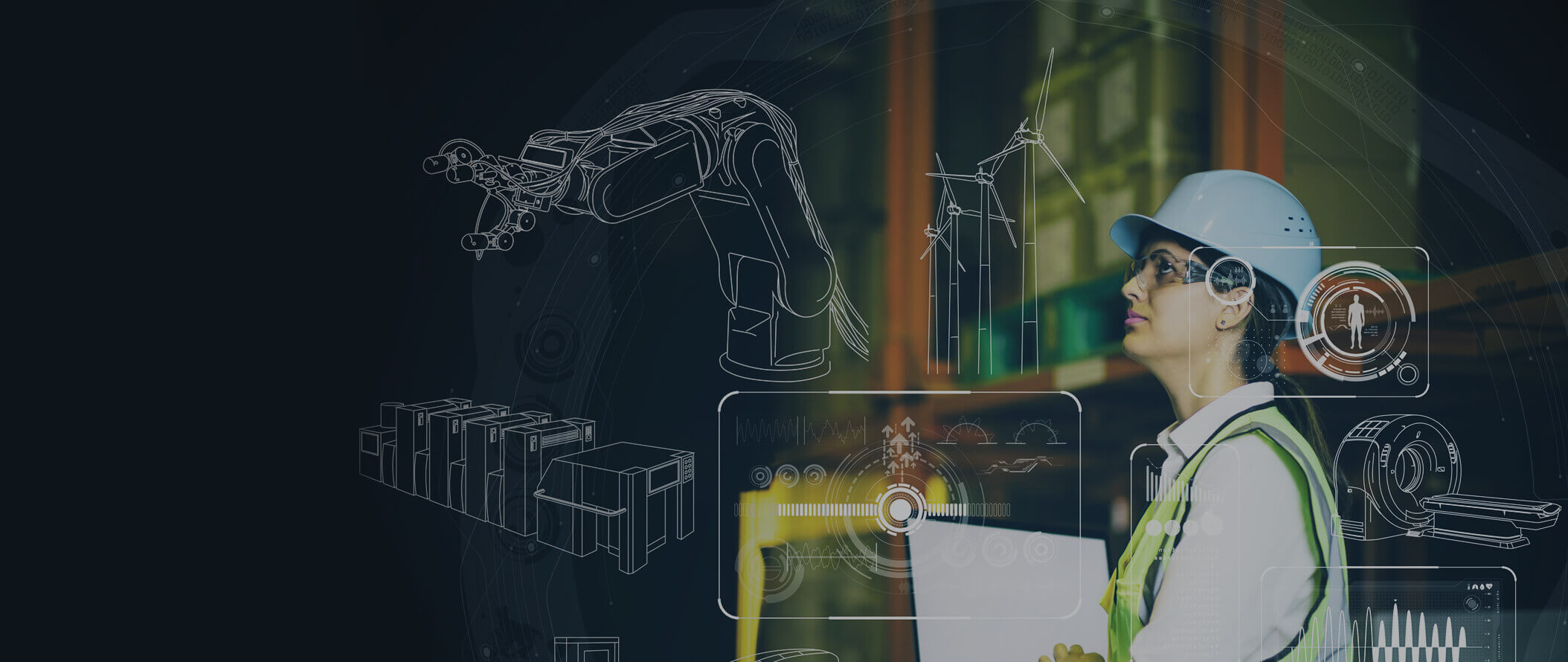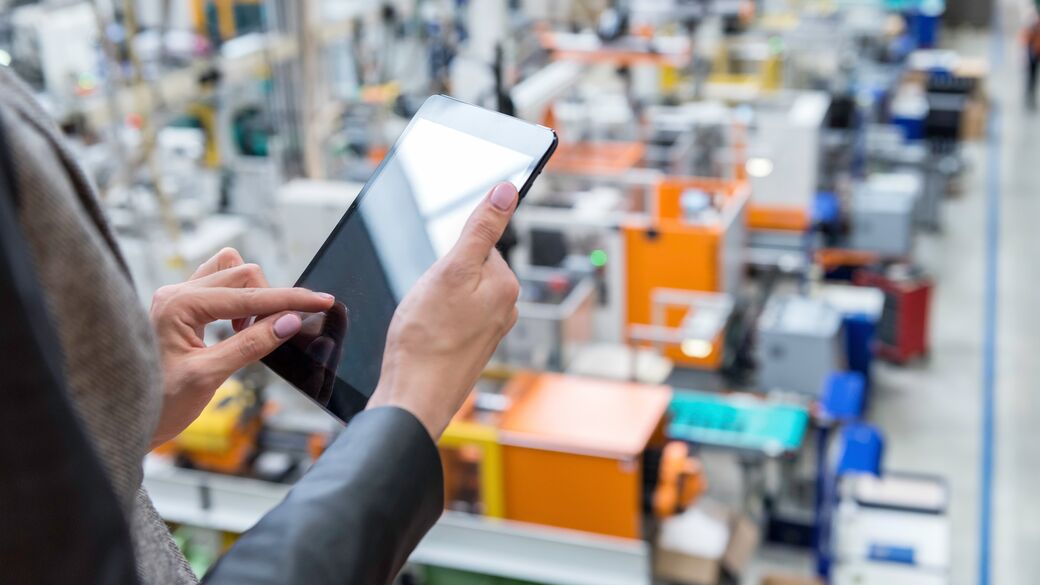Smarter workers. Fewer injuries. Better paint.
These are all part of the way the Industrial Internet of Things (IIoT) is reshaping manufacturing. IIoT is a new digital transformation trend that describes the process of embedding objects—from light bulbs to oil drilling platforms—with sensors, software, and other technology to collect and share data.
The future of manufacturing often conjures images of robots moving silently through a factory. But the reality is more complex.
IIoT marshals information from customer contact centers, shipping logs, and other sources to do everything from streamline supply chains to create new products.
Here are some of the ways that IIoT is transforming manufacturing:
1. Early Warning
One of the earliest IIoT manufacturing use cases is predictive maintenance. Manufacturers use the technology to identify issues in equipment before they turn into costly problems.
For example, Duke Energy had a steam engine slightly increase in vibrations after routine maintenance. The sensor information was fed through predictive analytics software that determined these vibrations signaled the blade on the turbine was slowly separating.
By catching this issue in advance, Duke saved $4.1 million of further damage and lost power generation if the turbine had gone down.
IIoT not only provides early warnings, but it can also immediately correct them. Duke uses a self-healing grid to identify a developing problem in its power grid. The issue gets automatically isolated and power is rerouted. The switch happens in less than a minute—even before some customers become aware of the problem.
2. Remaking Supply Chains
Manufacturing supply chains have traditionally been linear operations. IIoT transforms supply chains into interconnected systems that can respond in new, dynamic ways.
IIoT transforms supply chains into connected systems that can respond in new, dynamic ways.
For example, a manufacturing facility can use scanners and sensors to monitor materials usage. This can trigger an order for replacement materials in a more precise and timely way than humans can.
In addition, IIoT data "allows companies to tweak their own production schedules, as well as recognize sub-par vendor relationships that may be costing them money," says Daniel Newman, principal analyst of Futurum Research, a research firm.
Companies that give deep thought to IIoT can find competitive advantages in unexpected places. “Beyond the use of data for improved efficiencies … businesses can get creative with supply chain transparency," Newman says. IIoT can help companies build a reputation of social responsibility by allowing customers to access "where their product came from, who made it, and the conditions in which those workers lived," the researcher says.
3. Giving a New Perspective
One of the ways IIoT will assist manufacturing workers is through Augmented Reality (AR). This technology superimposes a computer-generated image on a user's view of the real world. Until now, AR has had limited applications—like a computer game that uses a webcam to superimpose a superhero costume on the player. Integrating AR with IIoT overcomes the limitations of using the technology on smartphones and personal computers.
Factory workers can wear headsets to see the schematics on a piece of equipment they're fixing. A Harvard Business Review report gives an example where AR improved productivity in wiring harness assembly by 25%.
Novel uses of AR in manufacturing appear every day.
An Australian construction company uses devices called smart helmets to keep workers better protected. Sensors in the helmets monitor the temperature and heart rate of the person wearing it, as well as the external humidity and temperature. If the wearer is at risk for heatstroke—a significant issue in the harsh Australian Outback—the helmet issues an alarm. Both the wearer and the manager are alerted he needs to take a break and cool down.
4. New Colors of Products
IIoT can provide many efficiencies, but it can also help companies develop new products and business models. “Internet-connected cars, coffee machines, trains, and all manner of other smart things can feed usage data back to their manufacturers and operators—informing the services they build around those products," explains Andrew Hobbs, a writer at the Internet of Business.
Consider computer vision, the science of making computers gain a high-level understanding from digital images or videos. A paint manufacturer could use computer vision—powered by IIoT—to achieve precise nuances in color. This can provide a distinct advantage over competitors who don't have quite the same palate of product offerings.
“If you're not actively using digital innovation to produce a better product, reduce operational costs, or create better customer experiences with your brand, you can bet your competitors are," says Mike Dodge, senior manager of Insight Digital Innovation Services.
IIoT as the Backbone of Operations
Smart companies should carefully study their entire operations and look for opportunities where IIoT can provide a competitive advantage. It will be the secret sauce to many operations in the coming years. Companies that can integrate it into their digital transformation can solve old problems, innovate new products, and create new business models that will transform their operations.








